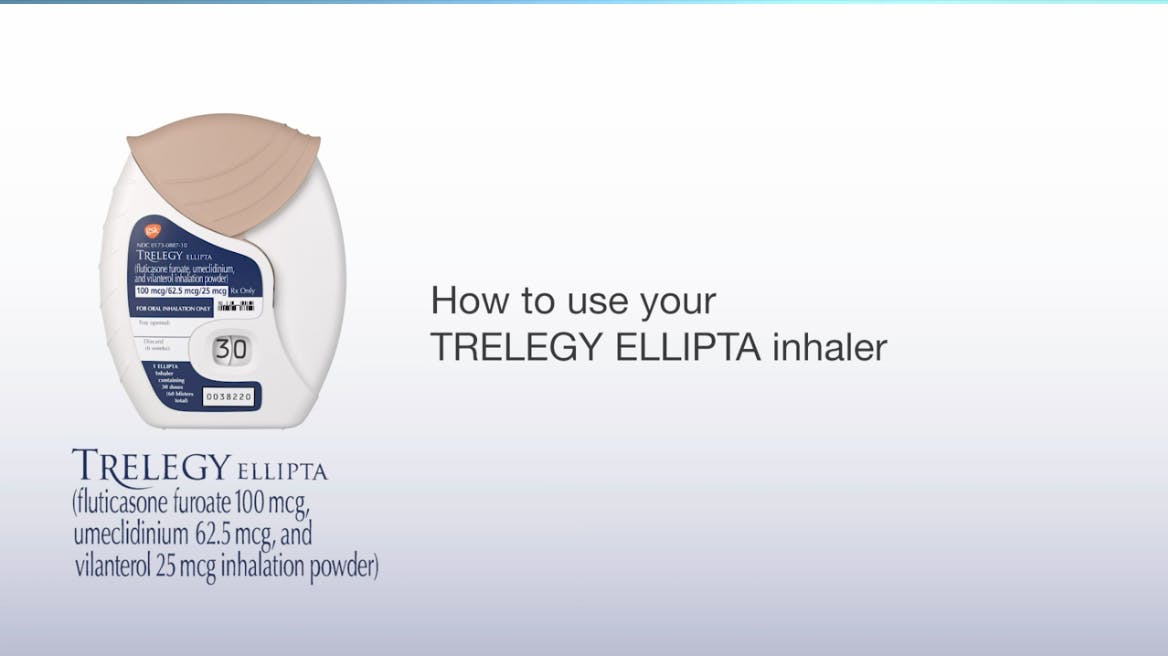TEXT ONSCREEN:
What factors and study data do you consider when choosing treatment options for your patients with chronic obstructive pulmonary disease (COPD)?
TEXT ONSCREEN:
Ravi Kalhan, MD, MS
Pulmonary Physician
Chicago, IL
Dr Kalhan has been compensated by GSK for participation in this program
DR KALHAN:
Hi. My name is Ravi Kalhan. I'm a pulmonary physician in Chicago, Illinois, where I specialize in the care of COPD patients.
TEXT ONSCREEN:
INDICATION
TRELEGY 100/62.5/25 is for maintenance treatment of patients with chronic obstructive pulmonary disease (COPD). TRELEGY is NOT for the relief of acute bronchospasm.
IMPORTANT SAFETY INFORMATION
CONTRAINDICATIONS
TRELEGY is contraindicated in the following:
Patients with severe hypersensitivity to milk proteins or demonstrated hypersensitivity to fluticasone furoate (FF), umeclidinium (UMEC), vilanterol (VI), or any of the excipients.
Please see additional Important Safety Information for TRELEGY at the conclusion of this video.
Please see full Prescribing Information, including Patient Information, for TRELEGY, available on this page.
Profession VO:
TRELEGY 100/62.5/25 is for maintenance treatment of patients with chronic obstructive pulmonary disease (COPD). TRELEGY is NOT for the relief of acute bronchospasm.
TRELEGY is contraindicated in primary treatment of status asthmaticus or other acute episodes of COPD or asthma and in patients with hypersensitivity to milk proteins, any of the active ingredients, or excipients.
Please see additional Important Safety Information for TRELEGY at the conclusion of this video.
TEXT ONSCREEN:
What are some of the difficulties in helping your adult patients manage COPD?
DR KALHAN:
Patients with COPD can face a challenging combination of symptoms, including ongoing breathlessness and cough, and they have risk of exacerbations, or flare-ups of their disease.
One of the things about working with patients, is we want to make things as simple as possible for them. In my experience, that means minimizing the amount of medicines someone takes. The closed triple therapy, a single inhaler with three medicines in it, for COPD, makes a big difference. One inhaled medicine, given once a day, makes life easier on patients, in my opinion.
Two studies for TRELEGY that have shown clinical benefits for appropriate patients are the IMPACT and FULFIL clinical trials.
TEXT ONSCREEN:
How would you summarize the landmark IMPACT study?
TEXT ONSCREEN:
IMPACT STUDY Primary Endpoint Results and Study Description
Design: A 12-month, randomized, double-blind, parallel-group study evaluating the treatment effect comparing TRELEGY 100 and BREO 100, an ICS/LABA, and comparing TRELEGY 100 and ANORO, a LAMA/LABA. Patients were eligible if they were symptomatic with a postbronchodilator percent predicted FEV1 <50% and a history of 1 or more moderate or severe exacerbations within the previous year, or with a postbronchodilator percent predicted FEV1 of 50% to 80% and a history of 2 or more moderate exacerbations or 1 or more severe exacerbations in the previous year.
Patients: At screening, patients with COPD (N=10,355, mean age: 65 years) had a mean postbronchodilator percent predicted FEV1 of 45.5% and a mean postbronchodilator FEV1/FVC ratio of 0.47. Patients were randomized (2:2:1) to treatment following a 2-week run-in period on their current COPD treatment. Current medications included ICS + LABA + LAMA (34%), ICS + LABA (26%), LAMA + LABA (8%), LAMA (7%), and other (25%).
Exacerbation severity criteria: Moderate if treatment with systemic corticosteroids and/or antibiotics was required and severe if hospitalization was required.
[Primary Endpoint data animation]
For more information on the results of the IMPACT study, please visit TRELEGYHCP.com or contact your representative.
DR KALHAN:
First, I would like to take a moment to briefly review IMPACT, a trial of more than 10,000 patients with a history of COPD exacerbations. This 12-month randomized, double-blind, parallel-group study evaluated the treatment effect of TRELEGY 100 versus BREO 100, an ICS/LABA, and TRELEGY 100 versus ANORO, a LAMA/LABA. The primary endpoint for this study was annual rate of moderate to severe exacerbations of COPD.
In the IMPACT study, TRELEGY 100 was found to provide a 15% reduction versus BREO 100, and a 25% reduction versus ANORO, in the annual rate of moderate to severe COPD exacerbations.
For the purposes of this video, I would like to focus on the FULFIL study.
TEXT ONSCREEN:
Can you give an overview of the FULFIL study design? What details stand out to you?
TEXT ONSCREEN:
The FULFIL Trial Was Designed to Compare TRELEGY With an ICS/LABA for Patients With or Without a History of Exacerbations1,2
Randomized, double-blind, double-dummy, parallel-group, multicenter, non-US study
[Data animation]
DR KALHAN:
The FULFIL trial was a randomized, double-blind, double-dummy, parallel group, multicenter, non-US study in more than 1,800 patients with COPD, either with or without a history of prior exacerbations. Patients were randomized to 1 of 2 treatment arms for 24 weeks. TRELEGY, a triple therapy that includes ICS/LAMA/LABA, versus SYMBICORT TURBUHALER 400/12, an ICS/LABA. The co-primary endpoints were changed from baseline at trough FEV1, and SGRQ total score at Week 24.
Of note, the trial was conducted outside the United States and used a non-US formulation of SYMBICORT that delivers budesonide, 320 micrograms, and formoterol, 9 micrograms, administered as one inhalation, taken twice a day. It is also important to note that a subset of 430 patients continued on blinded treatment through an extension phase for up to 52 weeks. Although we won't be covering those results in this presentation, you can learn more about those data by visiting TRELEGYHCP.com.
TEXT ONSCREEN:
Select Inclusion Criteria
Select Baseline Characteristics
Exacerbation history:
No moderate or severe: 3.5%
1 moderate or severe: 28%
≥2 moderate or severe: 37%
DR KALHAN:
In the FULFIL trial, most patients experienced at least one moderate or severe exacerbation, with 37% having at least 2, and 28% having at least 1 prior exacerbation. Notably, however, 35% of patients in FULFIL did not have an antecedent history of an exacerbation in the prior 12 months.
TEXT ONSCREEN:
What were the clinical outcomes for once-daily TRELEGY compared with twice-daily SYMBICORT TURBUHALER 400/12?
DR KALHAN:
In the FULFIL trial, TRELEGY demonstrated improvement in clinical outcomes versus SYMBICORT TURBUHALER. We'll start with the first co-primary endpoint, which was changed from baseline in trough FEV1.
TRELEGY demonstrated significant lung function improvement versus SYMBICORT TURBUHALER. The 24-week mean improvement in trough FEV1 was 171 milliliters for patients receiving TRELEGY versus SYMBICORT TURBUHALER.
TEXT ONSCREEN:
In a 24-Week Non-US Study
TRELEGY Demonstrated Improvement in Clinical Outcomes vs Twice-Daily SYMBICORT TURBUHALER 400/12*, an ICS/LABA1
[Improves Lung Function chart animation]
*SYMBICORT TURBUHALER 400/12 is a non-US formulation that delivers budesonide/formoterol 320/9 mcg and is administered via 1 inhalation taken twice daily.2,3
DR KALHAN:
Now let's move onto the second co-primary endpoint, quality of life.
In the FULFIL trial, TRELEGY significantly improved SGRQ total score with an additional negative 2.2-point mean reduction versus SYMBICORT TURBUHALER at Week 24. The SGRQ, the St. George's Respiratory Quotient, is a validated respiratory disease-specific, patient-reported instrument that assesses health status in 3 domains, including symptoms, activities, and impact on daily life.
TEXT ONSCREEN:
In a 24-Week Non-US Study
TRELEGY Demonstrated Improvement in Clinical Outcomes vs Twice-Daily SYMBICORT TURBUHALER 400/12*, an ICS/LABA1
[Improves Quality of Life animation]
*SYMBICORT TURBUHALER 400/12 is a non-US formulation that delivers budesonide/formoterol 320/9 mcg and is administered via 1 inhalation taken twice daily.2,3
DR KALHAN:
Now let's review the results of the secondary endpoint, which was not adjusted for multiplicity, the annual rate of moderate to severe exacerbations of COPD. As shown here, the annual rate of moderate to severe COPD exacerbations was reduced by 35% with TRELEGY, versus SYMBICORT TURBUHALER.
It should be noted that this study included patients who had received triple therapy, ICS/LABA/LAMA, before entering, and were stepped down to the ICS/LABA comparator arm.
TEXT ONSCREEN:
In a 24-Week Non-US Study
TRELEGY Demonstrated Improvement in Clinical Outcomes vs Twice-Daily SYMBICORT TURBUHALER 400/12*, an ICS/LABA1
Secondary and Other Endpoint: Change From Baseline in Trough FEV1 at Week 52
[Secondary endpoints animation]
*SYMBICORT TURBUHALER 400/12 is a non-US formulation that delivers budesonide/formoterol 320/9 mcg and is administered via 1 inhalation taken twice daily.2,3
TEXT ONSCREEN:
What were the most common adverse events (AEs) reported in the FULFIL trial?
DR KALHAN:
Adverse events, AEs, reported in the FULFIL trial are shown here. The most commonly reported AEs for TRELEGY, with an incidence of at least 5%, included nasopharyngitis and headache.
TEXT ONSCREEN:
In a 24-Week Non-US Study
Adverse Events Reported in the FULFUL Trial1
[Adverse reaction chart animation]
*SYMBICORT TURBUHALER 400/12 is a non-US formulation that delivers budesonide/formoterol 320/9 mcg and is administered via 1 inhalation taken twice daily.2,3
TEXT ONSCREEN:
Is the FULFIL study sample representative of what you see in your practice? If yes, how so?
DR KALHAN:
The patients who were included in the FULFIL study represent the diversity of COPD patients that I see in my clinical practice. Some have had prior exacerbations. Some have not had prior exacerbations. Almost all my patients are symptomatic when they come to see me. And the study teaches us that, for a lot of patients living with COPD, we can do better in terms of their inhaled therapy. The outcomes of improved lung function and improved quality of life are what, in my experience, patients really care about. They want to feel better. That's why they take medicine. And FULFIL gives us an evidence base that supports the notion that escalating someone to triple therapy may, in fact, result in their improved quality of life and improved lung function.
TEXT ONSCREEN:
Why are the results from the FULFIL trial meaningful to your practice?
DR KALHAN:
The challenge I see in my clinical practice is we don't always explain the rationale for COPD therapy, for inhaled therapy. I see tons of patients with COPD, who’ve been on an ICS/LABA for years. And, lots of times, they have lots of symptoms. Lots of times, they've had prior exacerbations. And if we don't have studies like FULFIL, we can't level set what we're trying to accomplish. So this study is really important, because it shows that in some people, even if they're on ICS/LABA, and they're symptomatic, even if they've not had prior exacerbations, we might be able to do better by giving them triple therapy. If they have had exacerbations, IMPACT and FULFIL together really tell us, we should give them triple therapy.
TEXT ONSCREEN:
In what ways do your consider exacerbation history when selecting TRELEGY for your patients with COPD?
DR KALHAN:
When I meet a COPD patient for the first time, the biggest thing on my mind is whether they've had a prior history of COPD exacerbations. A prior history of COPD exacerbations is the single greatest risk factor for a person to have future COPD exacerbations. And these COPD flare-ups are associated with a worsening of their condition.
So, preventing COPD exacerbations is actually my highest priority. The thing is, it can be pretty hard to figure out, sometimes, whether someone has had a prior history of exacerbations. Patients go to a variety of places to get treatment when they have respiratory illnesses. They might go to urgent care. They may not go anywhere when they have what I would consider to be a COPD exacerbation.
If, however, we can identify that someone has a history of COPD exacerbations, that have required treatment with antibiotics or steroids, or they have ever been in the hospital for a COPD flare-up, I think that person should be treated with triple therapy for their COPD. Using TRELEGY in those patients could not more clearly be associated with a reduction in the risk of future exacerbations. Certainly, in IMPACT, compared to LABA/ICS and LABA/LAMA. And to me, there is really no excuse for not escalating those patients to triple therapy.
PROFESSIONAL VO:
LABA without an ICS, for asthma, increases the risk of asthma-related death and in some patients, data suggest increased risk of asthma-related hospitalization. When LABA are used in fixed-dose combination with ICS, data do not show a significant increase in the risk of serious asthma-related events compared with ICS alone. TRELEGY should NOT be initiated in rapidly deteriorating or potentially life-threatening episodes of COPD or asthma and should NOT be used for the relief of acute symptoms. TRELEGY should not be used more often or at higher doses than recommended or with another LABA for any reason due to the risk of clinically significant cardiovascular effects and fatalities.
To help reduce the risk of oropharyngeal candidiasis, advise patients to rinse their mouths with water without swallowing after inhalation. Patients who use products containing ICS need to be monitored for signs and symptoms of pneumonia, and are at risk for potential worsening of existing infections. A more serious or fatal course of chickenpox or measles can occur in susceptible patients. Because deaths due to adrenal insufficiency have occurred in patients during and after transfer, taper patients slowly from systemic corticosteroids if transferring to TRELEGY. Monitor patients for hypercorticism and adrenal suppression, which may occur with ICS-containing products in susceptible individuals.
Caution should be exercised when considering the coadministration of TRELEGY with strong CYP3A4 inhibitors because increased systemic corticosteroid and cardiovascular adverse effects may occur. If paradoxical bronchospasm occurs, discontinue TRELEGY and institute alternative therapy. If hypersensitivity reactions occur, discontinue TRELEGY. Vilanterol can produce clinically significant cardiovascular effects in some patients. If such effects occur, TRELEGY may need to be discontinued. TRELEGY should be used with caution in patients with cardiovascular disorders.
Decreases in bone mineral density have been observed with long-term administration of products containing ICS. Patients with major risk factors for decreased bone mineral density should be monitored and treated prior to initiating TRELEGY and periodically thereafter.
Glaucoma and cataracts may occur with long-term use of products containing ICS.
Use with caution in patients with narrow-angle glaucoma or urinary retention.
Instruct patients to contact an HCP immediately if any of these signs or symptoms develop.
Use with caution in patients with convulsive disorders, thyrotoxicosis, diabetes mellitus, and ketoacidosis, and in patients who are unusually responsive to sympathomimetic amines.
Be alert to hypokalemia and hyperglycemia.
In subjects with COPD, the most common adverse reactions reported with TRELEGY were headache, back pain, dysgeusia, diarrhea, cough, oropharyngeal pain, gastroenteritis, upper respiratory tract infection, pneumonia, bronchitis, oral candidiasis, arthralgia, influenza, sinusitis, pharyngitis, rhinitis, constipation, urinary tract infection, and dysphonia.
TRELEGY should be administered with extreme caution to patients treated with MAOIs, TCAs or drugs known to prolong the QTc interval because they may potentiate the effect of vilanterol on the cardiovascular system.
Use beta-blockers with caution, as they block bronchodilatory effects of beta-agonists and may produce severe bronchospasm.
Use with caution in patients taking non–potassium-sparing diuretics, as ECG changes and/or hypokalemia may worsen with concomitant beta-agonists.
Avoid coadministration of TRELEGY with other anticholinergic-containing drugs, as this may lead to an increase in anticholinergic adverse effects.
Use with caution in patients with moderate or severe hepatic impairment, as fluticasone furoate systemic exposure may increase.
DR KALHAN:
Thanks for watching. To learn more about TRELEGY, please contact your GSK representative.
TEXT ONSCREEN:
IMPORTANT SAFETY INFORMATION (cont’d)
WARNINGS AND PRECAUTIONS
TRELEGY should not be used more often or at higher doses than recommended or with another LABA for any reason, as an overdose may result. Clinically significant cardiovascular effects and fatalities have been reported in association with excessive use of inhaled sympathomimetic drugs, like LABA.
Lower respiratory tract infections, including pneumonia, have been reported following use of ICS, like fluticasone furoate. Physicians should remain vigilant for the possible development of pneumonia in patients with COPD, as clinical features of pneumonia and exacerbations frequently overlap.
Patients who use corticosteroids are at risk for potential worsening of existing tuberculosis; fungal, bacterial, viral, or parasitic infections; or ocular herpes simplex. A more serious or even fatal course of chickenpox or measles may occur in susceptible patients.
Hypercorticism and adrenal suppression may occur with higher than the recommended dosage or at the regular dosage of ICS in susceptible individuals. If such changes occur, reduce the dose of TRELEGY slowly, and consider other treatments for management of COPD or asthma symptoms.
TEXT ONSCREEN:
IMPORTANT SAFETY INFORMATION (cont’d)
WARNINGS AND PRECAUTIONS (cont’d)
Caution should be exercised when considering the coadministration of TRELEGY with ketoconazole and other known strong CYP3A4 inhibitors (including, but not limited to, ritonavir, clarithromycin, conivaptan, indinavir, itraconazole, lopinavir, nefazodone, nelfinavir, saquinavir, telithromycin, troleandomycin, voriconazole) because increased systemic corticosteroid and cardiovascular adverse effects may occur.
Hypersensitivity reactions such as anaphylaxis, angioedema, rash, and urticaria may occur after administration of TRELEGY. Discontinue TRELEGY if such reactions occur.
Vilanterol can produce clinically significant cardiovascular effects in some patients as measured by increases in pulse rate, systolic or diastolic blood pressure, and also cardiac arrhythmias, such as supraventricular tachycardia and extrasystoles. If such effects occur, TRELEGY may need to be discontinued. TRELEGY should be used with caution in patients with cardiovascular disorders, especially coronary insufficiency, cardiac arrhythmias, and hypertension.
Decreases in bone mineral density have been observed with long‐term administration of products containing ICS. Patients with major risk factors for decreased bone mineral content, such as prolonged immobilization, family history of osteoporosis, postmenopausal status, tobacco use, advanced age, poor nutrition, or chronic use of drugs that can reduce bone mass (eg, anticonvulsants, oral corticosteroids) should be monitored and treated with established standards of care prior to initiating TRELEGY and periodically thereafter.
Glaucoma, increased intraocular pressure, and cataracts have been reported following the long‐term administration of ICS or inhaled anticholinergics. Consider referral to an ophthalmologist in patients who develop ocular symptoms or use TRELEGY long term.
Use with caution in patients with convulsive disorders, thyrotoxicosis, diabetes mellitus, and ketoacidosis, and in patients who are unusually responsive to sympathomimetic amines.
Be alert to hypokalemia and hyperglycemia.
TEXT ONSCREEN:
IMPORTANT SAFETY INFORMATION (cont’d)
ADVERSE REACTIONS
In subjects with COPD, the most common adverse reactions (≥1% and more common than placebo + FF/VI 100/25) reported in two 12-week clinical trials with UMEC + FF/VI 100/25, the components of TRELEGY 100/62.5/25, (and placebo + FF/VI 100/25) were: headache, 4% (3%); back pain, 4% (2%); dysgeusia, 2% (<1%); diarrhea, 2% (<1%); cough, 1% (<1%); oropharyngeal pain, 1% (0%); and gastroenteritis, 1% (0%).
Additional adverse reactions (≥1% incidence) reported in subjects with COPD taking TRELEGY 100/62.5/25 in a 52-week trial included upper respiratory tract infection, pneumonia, bronchitis, oral candidiasis, arthralgia, influenza, sinusitis, pharyngitis, rhinitis, constipation, urinary tract infection, and dysphonia.
DRUG INTERACTIONS
TRELEGY should be administered with extreme caution to patients being treated with monoamine oxidase inhibitors, tricyclic antidepressants, or drugs known to prolong the QTc interval, or within 2 weeks of discontinuation of such agents, because they may potentiate the effect of vilanterol on the cardiovascular system.
Use beta‐blockers with caution, as they not only block the pulmonary effect of beta‐agonists, such as vilanterol, but may produce severe bronchospasm in patients with COPD or asthma.
USE IN SPECIFIC POPULATIONS
Please see Full Prescribing Information, including Patient Information, for TRELEGY.
The shape of the ELLIPTA inhaler is a trademark of the GSK group of companies.
Trademarks are property of their respective owners
©2024 GSK or licensor
PMUS-FVUVID240009 June 2024
Produced in USA
Close transcript





